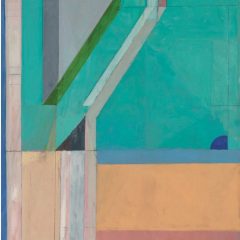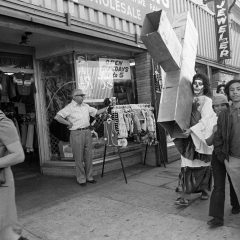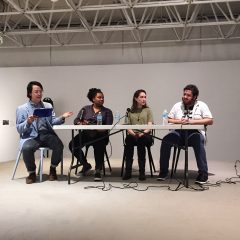How many times can one hear the same joke and still laugh? This thought occurred to me while visiting “Not Ready to Make Nice; Guerrilla Girls in the Artworld and Beyond” at the Galleries at Moore College of Art and Design through March 17, 2018. Since its initial activities in 1985 the Guerrilla Girls have always been funny, even if it has been a decidedly black humor. The group that has been called “the conscience of the art world” made its public debut with posters unofficially pasted throughout lower Manhattan, adding to the cacophony of stickers, flyers and graffiti so prevalent on the city’s streets at the time. Who can forget the one titled “The Advantages of Being A Woman Artist” which ran from “Working without the pressure of success” to “Getting your picture in the art magazines wearing a gorilla suit”?
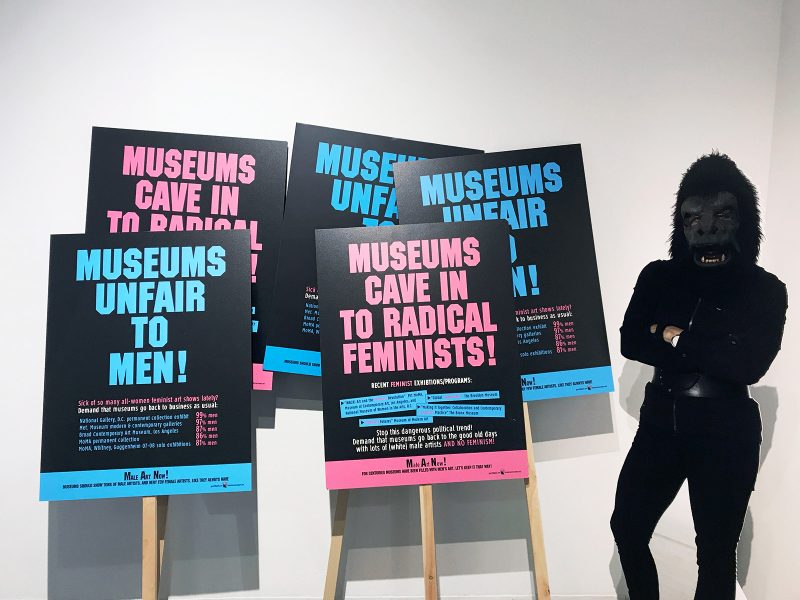
Facts, humor and fake fur, a history of art world protest from the 1970s onward
They called attention to gender inequity in the art community with a self-described arsenal of “facts, humor and fake fur,” marshaling a sophisticated knowledge of visual presentation with a thorough understanding of the conventions of Madison Avenue. The group was intentionally anonymous, using gorilla masks and pseudonyms taken from the history of women artists to blur individual identities into their commonality as women. This also protected individuals from retaliation; no one likes whistle-blowers and truth tellers.
Artists had picketed museums in NYC over various social issues since 1969 when the Black Emergency Cultural Coalition protested the Metropolitan Museum of Art’s exhibition, “Harlem on My Mind,” and again in 1971 when they picketed outside the Whitney Museum of American Art’s “Contemporary Black Artists in America”; From 1969-71 The Art Workers’ Coalition lobbied several NYC museums over a variety of issues; and in 1970 the Ad Hoc Womens Art Committee picketed at the Whitney in connection with that year’s Biennial exhibition. But the Guerrilla Girls’ message transcended one exhibition or institution, and they took their message national.
The initial poster campaign was followed by bus advertisements, billboards, banners, printed ephemera, television appearances, exhibitions, books and awards. They continued to update versions of their 1989 poster “Do Women Have to be Naked to Get into the Met. Museum?” – with the memorable image of Ingres’ odalisque wearing a gorilla mask – as recently as 2011. The statistics have changed. A bit.
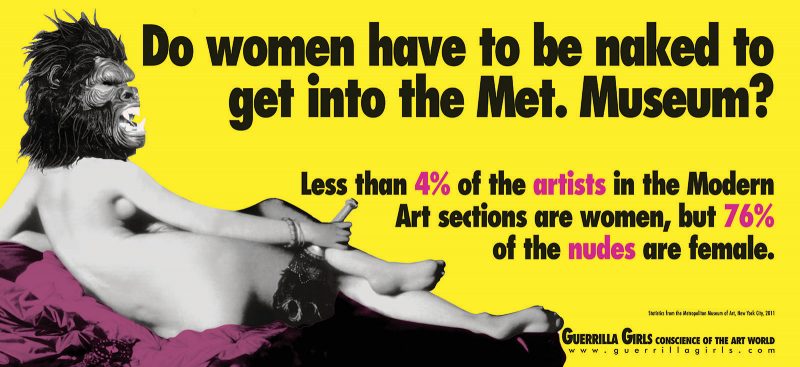
Some progress, more needed
I’ve been accused of preferring to write about art by women – a charge I accept with pride. I can well remember when no one was exhibiting women, or writing about them. When I tell younger friends that I went to a university – albeit a staid, Ivy League one – whose entire arts and sciences faculty had one tenured woman and she had a woman’s chair, they think I’m describing a time before The Flood. More women are teaching in art departments, but the arts are also leading the charge to replace tenured positions with contingent ones. The University of Pennsylvania’s Fine Arts faculty in its undergraduate program, for example, includes 48 part-time faculty, 7 tenure-track. And Carolee Schneemann‘s first U.S. survey exhibition was organized in Europe and is currently at MoMA’s outpost, PS 1 – in Queens. Manhattan still isn’t welcoming her.
What it takes for parity in the art world
It is hard to calculate what difference a group such as the Guerrilla Girls has made. The exhibition surveys its early activities but concentrates on the past ten years; almost all recent activities have been conducted beyond the U.S., with topics expanding beyond the visual arts, such as the inclusion of women in Hollywood, and branching out to address issues of social justice including homelessness and war. The exhibition should be of interest to viewers who think they know of the group’s activities but who haven’t caught up with their overseas work; anyone who might be unfamiliar with the Guerrilla Girls; those who think of feminism as a four-letter word; and everyone interested in engaging the visual arts in social activism.
“Not Ready to Make Nice; Guerrilla Girls in the Artworld and Beyond” was organized by Columbia College, Chicago, and since 2012 has traveled to ten venues – this is the last. All but one of the venues are university or college art galleries – often with women directors. But they don’t report to boards of directors, as do directors of private museums and this accords them great programming freedom. I suspect there will only be real parity in the large art world institutions when half the money that support them and half their board members consist of women– those who have made their fortunes, not married or inherited them. The art world is taking the social position of rear guard. Until then, we’ll have to listen to the same jokes. At least someone is telling them.
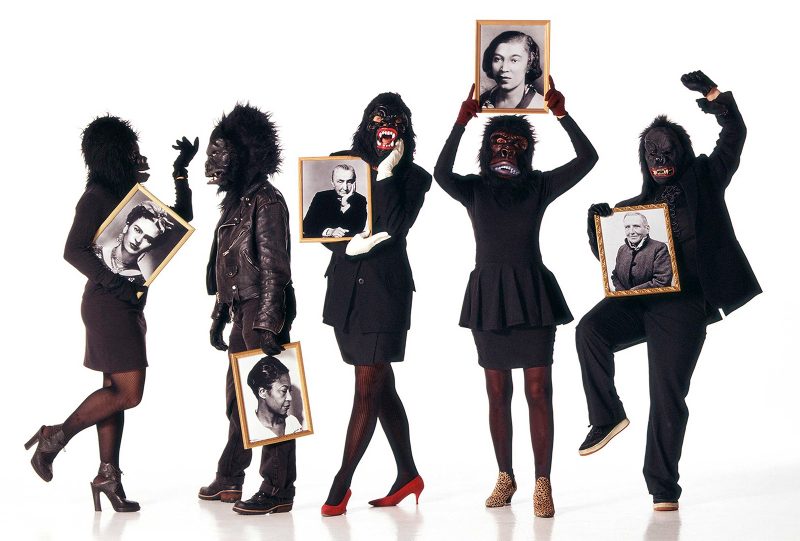
“Not Ready to Make Nice; Guerrilla Girls in the Artworld and Beyond” at the Galleries at Moore College of Art and Design through March 17, 2018. Guerrilla Girls performance and talk, Thursday. March 15, 7-8:30 PM. Free. Register here.


